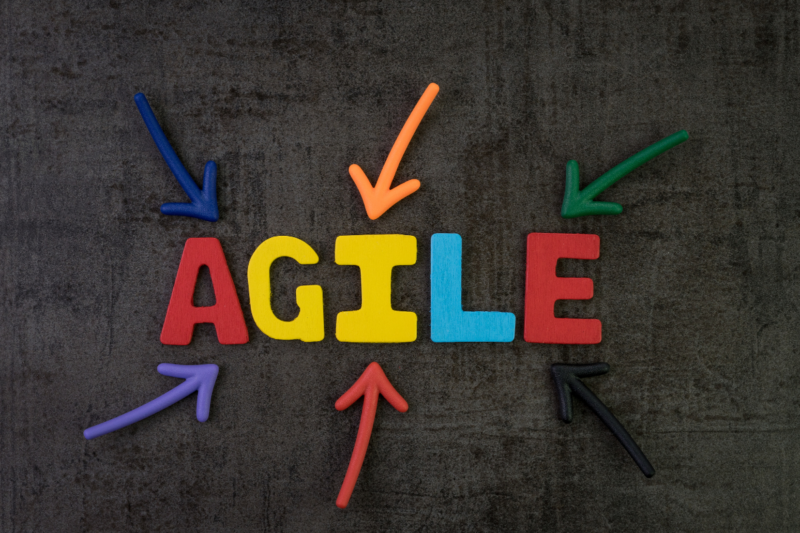Agile frameworks: a contradiction in terms or the best of both worlds?
The core of the Agile development philosophy is, as the name suggests, agility. Are you in danger of losing the many benefits of Agile development if you force it into the straitjacket of a framework? “The practice is a lot more nuanced than that,” says Peter Heyns, business analyst at Equalminds. Let’s delve into the world of Agile frameworks!
The term “Agile” has become inflated over time. But in the current management lexicon, Agile stands for a way of thinking and working. Which allows your organization to quickly respond to change.
Agile manifesto: values and principles
“That definition is correct in a certain sense,” says Heyns. “But originally, Agile was a way to tackle complex problems in software development.” The Agile development philosophy was established in 2001 in the form of a manifesto. It described four core values, and 12 guiding principles were later added.
We don’t have the space to get into all of them in detail here. But Heyns likes to reflect on the fourth value in particular. This states that responding to change is preferable to following a plan. The problem that Agile wanted to solve was that companies had become overly focused on planning and documenting their software development cycles. As a result, they risked losing sight of what really matters: satisfying their customers by delivering effective software.
Inner contradiction
According to Heyns, the fact that the authors of the manifesto wanted to leave room for developers to deviate from the plan and adjust it in response to change is the most important innovation of the Agile philosophy. “Often a developer is working toward solving a problem. However, the users will have an entirely different idea of what that solution should achieve. By working with short iterations, continually asking for feedback, and adjusting your plans accordingly, you avoid developing a solution that doesn’t meet your customers’ needs.”
The success of the Agile development philosophy has led to the creation of countless different methods and frameworks. It supports Agile working. Inevitably, the question arises as to whether there is a contradiction in this. After all, the term “framework” implies the imposition of a fixed set of rules. While the Agile approach implies a high degree of freedom and requires that you remain open to change.
Corporate culture takes precedence
“This evolution – leading to all these different frameworks – is an inherently human phenomenon,” says Heyns. “Different people interpret Agile values and principles in different ways. One person might prioritize close cooperation with the customer. So their methodology will place more emphasis on organizing sufficient contact time. Another person might focus on developing self-managing teams and improving the effectiveness of those teams.
“Every company has its own corporate culture. That must make room for the Agile philosophy in one way or another,” says Heyns. “But it also works the other way around, so the Agile philosophy will have to be adapted in some cases. This is how all these frameworks have emerged over the years. And that’s why the actual Agile software development sometimes forms little more than a cog within a broader business context of Agile working.”
The best of both worlds
“An Agile framework often simply provides more structure and guidance for teams managing complex development projects,” notes Heyns. “In that sense, you might even compare it to a broad, overarching ‘enterprise framework’ or even a general management structure.”
So, can we conclude that Agile frameworks bring together the best of both worlds? The rigid waterfall method and the flexible Agile method? “It’s difficult to say that one framework – somewhere in the middle – combines the best of both worlds. And at the same time tempers their excesses,” says Heyns. “In any case, there will always be a certain tension when you combine polar opposites. So at Equalminds, we prefer to start from the customer’s established corporate culture. The best framework is simply the one that works for your company.”
Would you like to delve into Agile frameworks with us? Then we’d love to hear from you!
Are you eager to know our Agilists? Click here!



